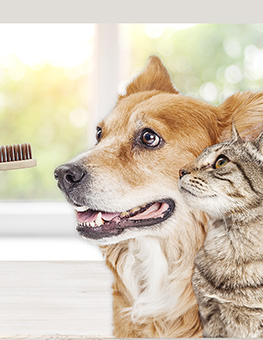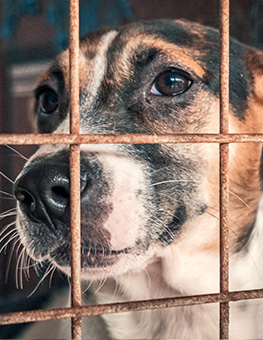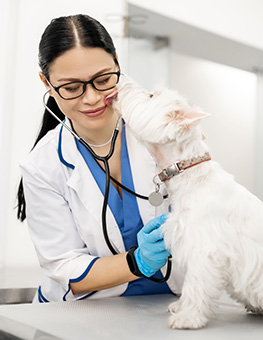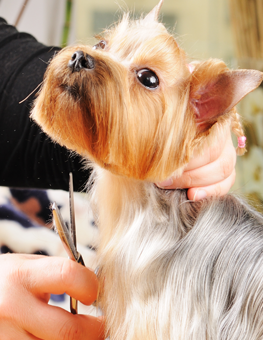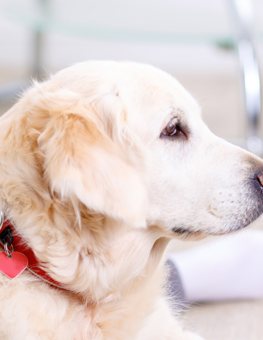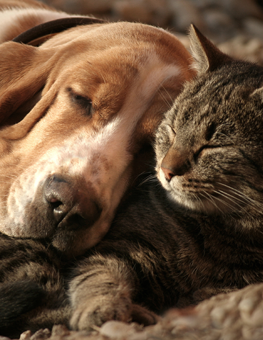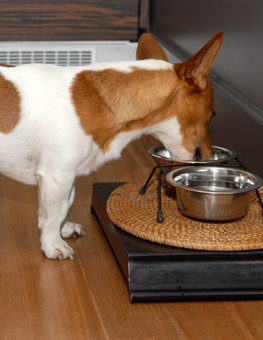How to Help My Dog Adjust to My Going Back to Work
Heading back to work? What about beautiful Bella or handsome Duke? How will they cope with you returning to a regular work schedule out of the house? This is a very common question from pet parents, as they are concerned about stress, anxiety, and fear in their pets when they are not around.

Help your pets cope with fears and separation anxiety by providing safe spaces and building their confidence.
Making My Pup Feel Safe and Secure
Fear can be difficult for a pet to handle and it can manifest in many ways such as crying, shaking, and chewing. The easiest way to combat fear is to provide a safe space for your pet such as a crate that they feel comfortable in, or a plush bed with a blanket if they like somewhere to hide in case there are loud noises outside (like a thunderstorm or construction). Young puppies will benefit greatly from a crate as it replicates a dark comfortable den. Once your puppy is older, they will consider their crate a safe space and will use it as they see fit. Some dogs sleep in their crate voluntarily because it makes them feel safe and secure.
Helping My Dog with Separation Anxiety
Anxiety is one of the most common problems that pets face, and a dog with separation anxiety can be the hardest to break through. Building confidence with your pet is crucial to them being comfortable without you. Walks outside for exposure to normal sounds as well as some sniffing can help build confidence and also help with fear of noises, other pets, or people. Inside your home, make sure that your pet has plenty of mental stimulation in the form of busy toys, or treats, that can be stuffed with kibble or peanut butter. This will help your pet focus on the reward instead of your absence. Once you get home, the toy disappears and you, once again, are the focus of all your dog’s love and attention.
Additionally, consider a camera that has a treat-giving option to help reassure your pet when you are out of the house. It also allows you to check on their progress during the day. Some WiFi cameras have a microphone option which allows you to speak to your pet. This can be helpful if something triggers their anxiety or fear, there’s nothing better than your soothing voice to your pet. Cameras are also beneficial because if your pet has more than one area of the house they like to be in, you can set up multiple cameras to monitor them from the comfort of your desk at work.
Training My Pets to Reduce Their Stress

A stressed dog may over-groom, bark a lot, or behave destructively.
Stress in pets can manifest in destructive behavior, over-grooming, barking, etc. Most of the tips listed above will work for stressed pets, but also consider having someone come to visit your pet while you are out of the house, either a dog walker or just someone to give your pets a little bit of playtime to make them happy. Exercise is an excellent way to fight stress in our canine and feline furbabies. Distracting them from the cause of stress or removing them from their stressful situation can do wonders. Playing fetch with your dog or just going for a 30-minute walk can greatly reduce their stress level.
If nothing seems to be working, don’t be afraid to employ the help of a trainer, your veterinarian, or a veterinary behaviorist. These professionals are there to give you more options for helping a dog with separation anxiety including different training techniques, advice on how to notice triggers for your pets before leaving the house, or pharmaceutical intervention as your pet acclimates to your new schedule.





